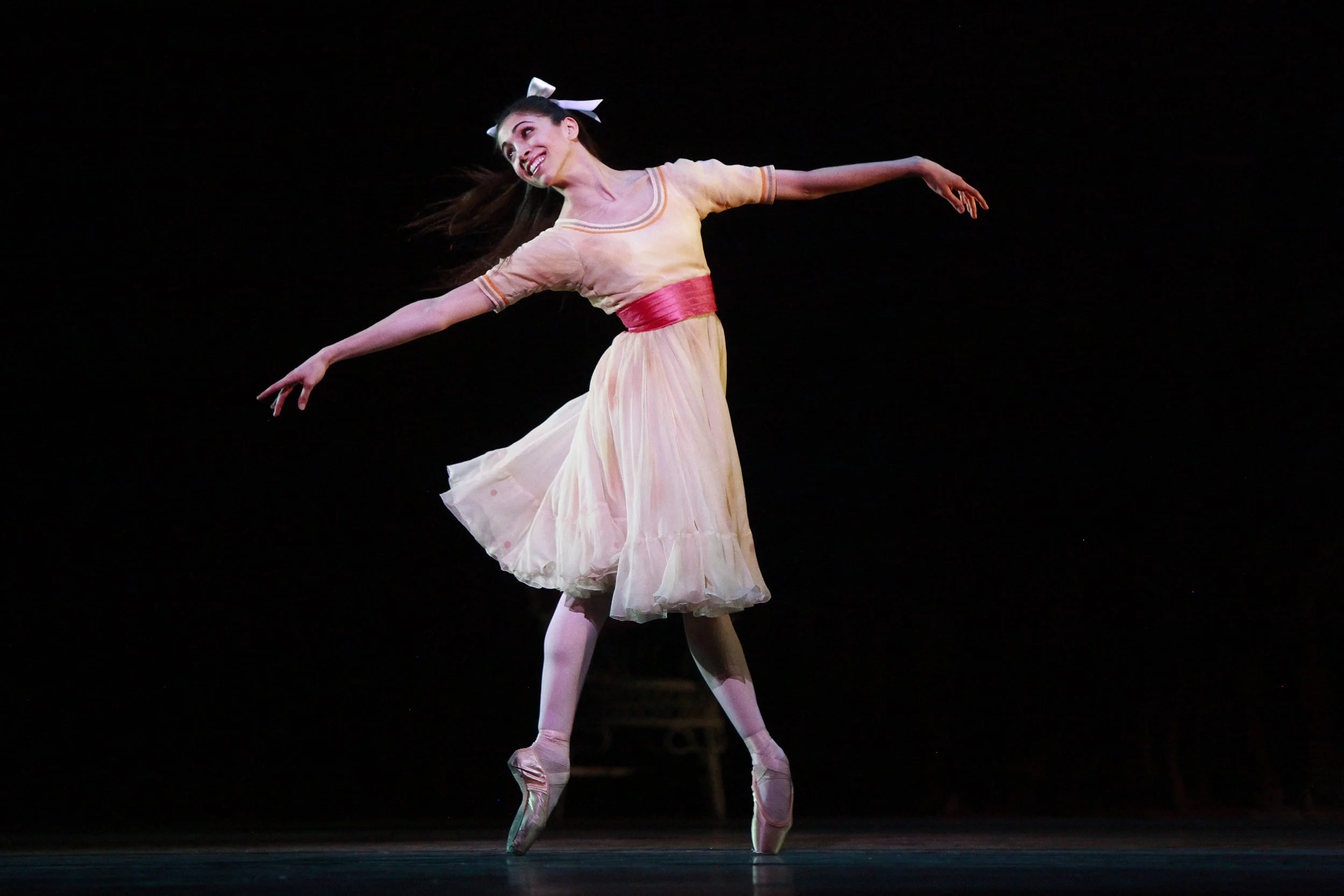Late in life Kenneth MacMillan told John Osborne that his experience of seeing Look Back in Anger in 1956 had made him realise that “everything in my world was merely window-dressing.” The Invitation was one of the first fruits of MacMillan’s conviction that ballet in Britain needed grit and realism. It made waves for the quality of its story-telling but what made it especially controversial was its vivid enactment of a rape.
MacMillan had read Colette’s Le Blé en Herbe and The House of the Angel by Beatriz Guido; his scenario for The Invitation, in effect, conflates them. The setting is a bourgeois household ‘in some warm country’ at the beginning of the twentieth century. Two young cousins, a boy and girl, both in the first glimmers of sexual awareness, are seduced by an unhappily married middle-aged couple. While the boy’s seduction might be explained away as a rite of passage, the girl’s experience is brutal. She misconstrues the older man’s interest, and responds almost playfully to him. In a pas de deux, her innocent steps become, in his eyes, overt provocations. He rapes her and she collapses. Later, the boy tried to comfort her; in loathing she pushes him away. Her world has become bestial. She walks ashen-faced downstage as the curtain falls.
Yasmin Naghdi in The Invitation performed 2016 ©Charlotte MacMillan
So explicitly choreographed was the actual rape scene, that Ninette de Valois asked MacMillan at one of the final rehearsals to consider if that part of the action could take place off stage. He declined to make changes and de Valois did not over-rule him. The girl (Lynn Seymour) was flung spread-eagled around her assailant, then hooped around his body, sliding to the ground after the moment of orgasm.
MacMillan opted for a commissioned score by Mátyás Seiber, who died shortly before the premiere (but having substantially completed the score). MacMillan gave Seiber a detailed scenario with a full treatment of the main characters and their psychological states. Only one fragment was not new: Seiber suggested his Pastorale and Burlesque for flute and orchestra, to herald the young girl’s first entry. Again, MacMillan opted for designs by Nicholas Georgiadis: tachiste scenes on gauze praised by most critics, only Peter Williams of Dance and Dancers dissenting, on the basis that the scenery was “near-bordering on the forbidden world of the fairy-tale” and at variance with the harsh realism of the ballet’s subject-matter.
“I made the characters people I know”, MacMillan told The Times, “not the characters in the books. I want people to go to the theatre to be moved by something they can recognise.” For the same paper’s review of the first performance at Covent Garden on 30 December, MacMillan had shown “an altogether remarkable power to represent a terrible act of violence with truth and a gruesome sort of beauty, but without toppling from the abyss of art into the abyss of sensationalism.” Further, The Times noted, The Invitation “established Miss Lynn Seymour’s arrival as an actress-ballerina of the front rank”.
“Choreographically this is MacMillan’s best work and I no longer doubt his quality”, wrote Richard Buckle, a verdict with which his opposite number at The Observer, Alexander Bland concurred. “Above all he has written beautifully for Lynn Seymour. She is the lucky possessor of a tender, expressive, liquid movement astonishingly similar to that of Fonteyn: she can act: and she is very young. From the moment when she runs on and gently plays (flirts would be too grown-up a word) with the boy – sensitively danced by Christopher Gable – to the beautifully arranged twisting rape scene and her last empty gesture, a modern Giselle, fracture by lust instead of by love, he never puts a foot wrong for her. And she responds with a performance which puts her straight into the ballerina class.”
First performed 10 November 1960
Company Royal Ballet Touring Company
Music Matyas Seiber
Design Nicholas Georgiadis
Cast Lynn Seymour, Christopher Gable, Anne Heaton, Desmond Doyle
